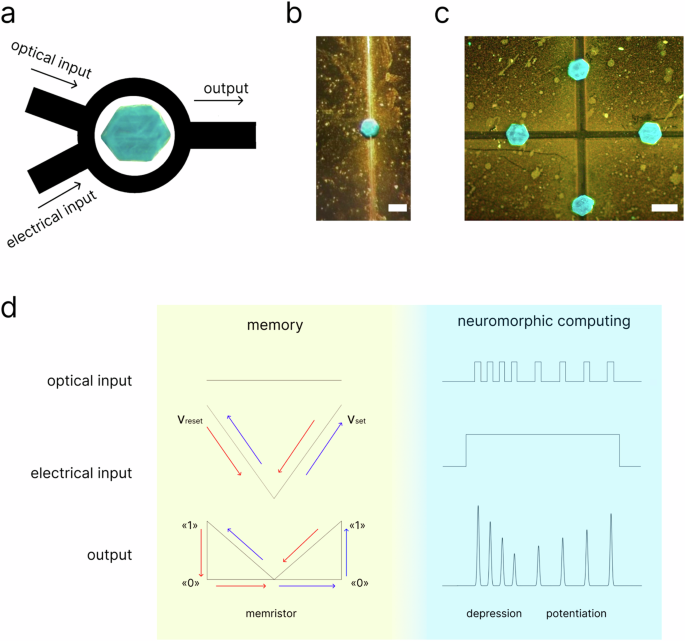Innovative Neuromorphic Computing with Metal-Organic Frameworks

Introduction to Neuromorphic Computing
Neuromorphic architectures are pushing the boundaries of traditional computing by enabling advanced cognition, learning, and in-memory processing. These systems necessitate materials that operate with speed, energy efficiency, and durability.
Key Findings
- Metal-Organic Framework Single Crystals: An innovative in-memory computing architecture utilizing MOF single crystals is presented.
- Light Control Mechanism: The inherent memristive behavior allows for nonlinear electric response changes when exposed to light.
- Data Processing Capability: The system can achieve 40 bits per second for optoelectronic data processing.
- Neural State Switching: It switches to a neuromorphic state triggered by laser pulses, facilitating accurate text recognition.
Conclusion
This development in MOF technologies marks a significant step towards achieving efficient in-memory computing architectures. By harnessing light, these systems can simultaneously manage data storage, processing, and neuromorphic functions, opening new avenues for tech innovations.
This article was prepared using information from open sources in accordance with the principles of Ethical Policy. The editorial team is not responsible for absolute accuracy, as it relies on data from the sources referenced.